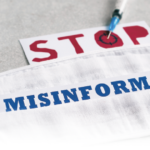NEW YORK (Reuters Health)—What the Food and Drug Administration calls a ‘breakthrough’ drug is often not the same as what a layperson would call a breakthrough, a new study shows.
The FDA uses the term more often, and for smaller advances, than people use it colloquially, and this may lead patients to have unwarranted confidence in new drug claims.
As the researchers on the new study describe it, the FDA Safety and Innovation Act, passed in 2012, allows the FDA to give breakthrough designation to any drug treating a serious or life-threatening condition that “may demonstrate a substantial improvement over existing therapies” for one clinical endpoint in preliminary evidence.
“These clinical endpoints can be surrogate outcomes and don’t have to be a direct outcome of the disease,” coauthor Dr. Tamar Krishnamurti, a research scientist at Carnegie Mellon University in Pittsburgh, told Reuters Health by email.
The researchers recruited almost 600 people online through Amazon’s Mechanical Turk and randomly assigned them to read one of five short descriptions of a recently approved drug for metastatic lung cancer with ‘breakthrough’ designation.
One vignette only described the facts about the drug—including the size of the drug trial, and the findings that about half of the patients had their tumors shrink while on the drug, that the effects lasted for seven months, and that side effects included diarrhea, nausea, and vomiting—without using the term breakthrough.
A second vignette used these facts and included the term “promising,” while a third used the word “breakthrough.”
“While ‘breakthrough’ is an official designation that may lead to accelerated drug approval, ‘promising’ is just a descriptor term that FDA has used in about half of its press releases to describe breakthrough drugs,” Dr. Krishnamurti said.
The fourth vignette included language required for FDA labeling, clarifying that continued approval of the drug may be contingent on further trials confirming its effectiveness.
The fifth vignette changed “may be contingent on” to “is contingent on.”
While 11% of respondents who read the facts-only description rated the drug as very effective or completely effective, about 25% of those who saw the “promising” or “effective” descriptions said the same. More of the second and third group of respondents also believed the evidence supporting the new drug was strong or very strong.
And only 10% to 16% of people who read the fourth and fifth vignettes, which added further explanations and contingencies, were likely to believe incorrectly that the drug was proven to save lives, compared to 31% of those who read the “breakthrough” vignette, according to a Sept. 21 online report in JAMA Internal Medicine.



